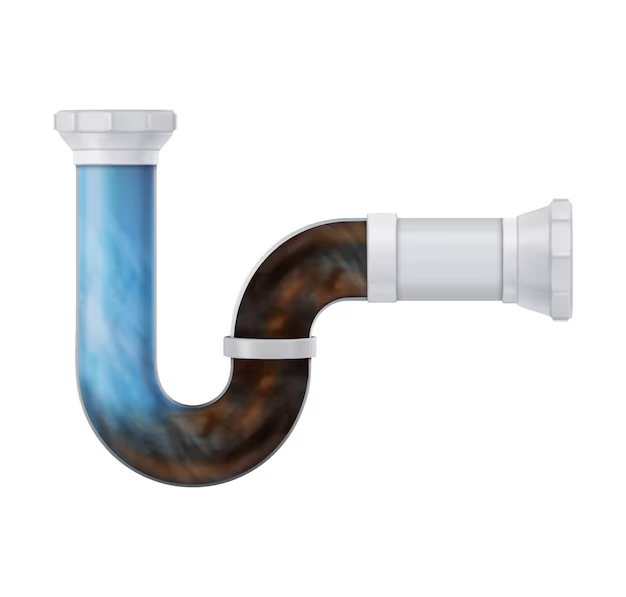The KUDS30FXPA4 is a widely known model from the KitchenAid dishwasher series. Whether you’re encountering drainage issues or planning to install an L-shaped drain, understanding the basics of the KUDS30FXPA4 drain system is crucial. In this guide, we’ll walk through the key aspects, troubleshooting steps, and the specifics of an L-shaped drain installation for your dishwasher.
1. Introduction to the KUDS30FXPA4 Drain System
The KUDS30FXPA4 is a high-performance dishwasher from KitchenAid. Like all dishwashers, proper drainage is essential for its functionality. The drain system ensures that wastewater is removed efficiently, preventing pooling and ensuring proper cleaning cycles.
2. Common Drain Issues
There are several potential issues that may arise with the KUDS30FXPA4 dishwasher drain, such as:
- Slow drainage: Water drains slowly after the wash cycle.
- Clogged drain: Food particles, soap scum, or other debris block the drain.
- Leaking drain hose: Damaged or loose connections in the drain hose.
- Malfunctioning drain pump: The pump fails to push water through the drain properly.
3. How to Diagnose Drain Problems
To troubleshoot drain issues, follow these steps:
- Check for clogs: Look for obstructions in the dishwasher’s drain.
- Inspect the drain hose: Ensure the hose is free of kinks or blockages.
- Listen to the pump: If you hear unusual noises, the pump might need replacement.
4. What is an L-Shaped Drain?
An L-shaped drain refers to the configuration of the drain pipe, where it takes a 90-degree bend, resembling the shape of an “L.” This is commonly used in compact installations where space is limited and allows for more flexible plumbing designs.
5. Benefits of an L-Shaped Drain
- Space-saving: Ideal for tight spaces.
- Efficient drainage: Enhances water flow by reducing resistance.
- Reduced blockages: The angled design minimizes the risk of clogging.
6. Tools Required for Installation
To install an L-shaped drain in your KUDS30FXPA4 dishwasher, you’ll need:
- Adjustable wrench
- Screwdriver
- Plumber’s tape
- L-shaped pipe
- Hose clamps
- Pliers
- Pipe cutter (if needed)
7. Step-by-Step Guide to Installing an L-Shaped Drain
- Turn off the power and water supply: Safety first—make sure both are disconnected.
- Remove the old drain hose: Use a wrench to disconnect the existing drain hose from the dishwasher.
- Install the L-shaped pipe: Attach the L-shaped pipe to the dishwasher drain outlet using plumber’s tape for a secure fit.
- Connect the new drain hose: Attach the other end of the hose to the L-shaped pipe, securing it with hose clamps.
- Secure the connections: Ensure all connections are tight to prevent leaks.
- Test the installation: Run a short dishwasher cycle to check for any leaks or drainage issues.
8. How to Maintain Your Dishwasher Drain
Maintaining your dishwasher’s drain system is essential for long-term functionality:
- Regularly clean the filter: Debris can easily clog the drain if not cleaned.
- Check for clogs: Periodically inspect the hose for any blockages.
- Use dishwasher cleaners: These can help break down any buildup in the system.
9. Signs of Drain Malfunction
- Water pooling at the bottom of the dishwasher
- Foul odors from standing water
- Dishwasher not draining fully after the cycle
10. How to Replace the Drain Pump in KUDS30FXPA4
If the pump fails, follow these steps:
- Disconnect the power: Unplug the dishwasher.
- Remove the lower rack: Take out the lower dish rack to access the pump.
- Locate the pump: The drain pump is usually located at the bottom of the dishwasher.
- Disconnect and replace: Disconnect the old pump and replace it with a new one.
11. FAQs on Dishwasher Drainage Systems
- Why is my dishwasher not draining?
- Possible clogs, pump issues, or a kinked hose.
- Can I install an L-shaped drain myself?
- Yes, with the right tools, it’s a relatively straightforward process.
- How often should I clean the dishwasher drain?
- Cleaning once a month is recommended to prevent buildup.
12. Avoiding Future Drain Issues
- Run hot water: Before starting the dishwasher, run the hot water in your sink to improve the water temperature.
- Clean the filter regularly: Keeping the filter free of debris ensures efficient draining.
- Use the right detergent: Avoid using too much soap, as it can lead to buildup.
13. How to Clean a Clogged Drain
- Use baking soda and vinegar: Pour a mixture down the drain and let it sit for 15 minutes before rinsing with hot water.
- Plunge the drain: Use a plunger to dislodge blockages.
14. Professional Assistance vs. DIY
For minor issues, DIY fixes can be effective, but for complex drainage problems or if you’re unsure about the L-shaped installation, it’s wise to contact a professional.
15. Conclusion
The KUDS30FXPA4 dishwasher is a reliable kitchen appliance, but like all dishwashers, its drain system requires proper care. Whether you are facing common drainage issues or looking to install an L-shaped drain, the steps above can help you address and resolve these challenges effectively. Regular maintenance and early diagnosis of problems can ensure your dishwasher remains in top working condition for years to come.
